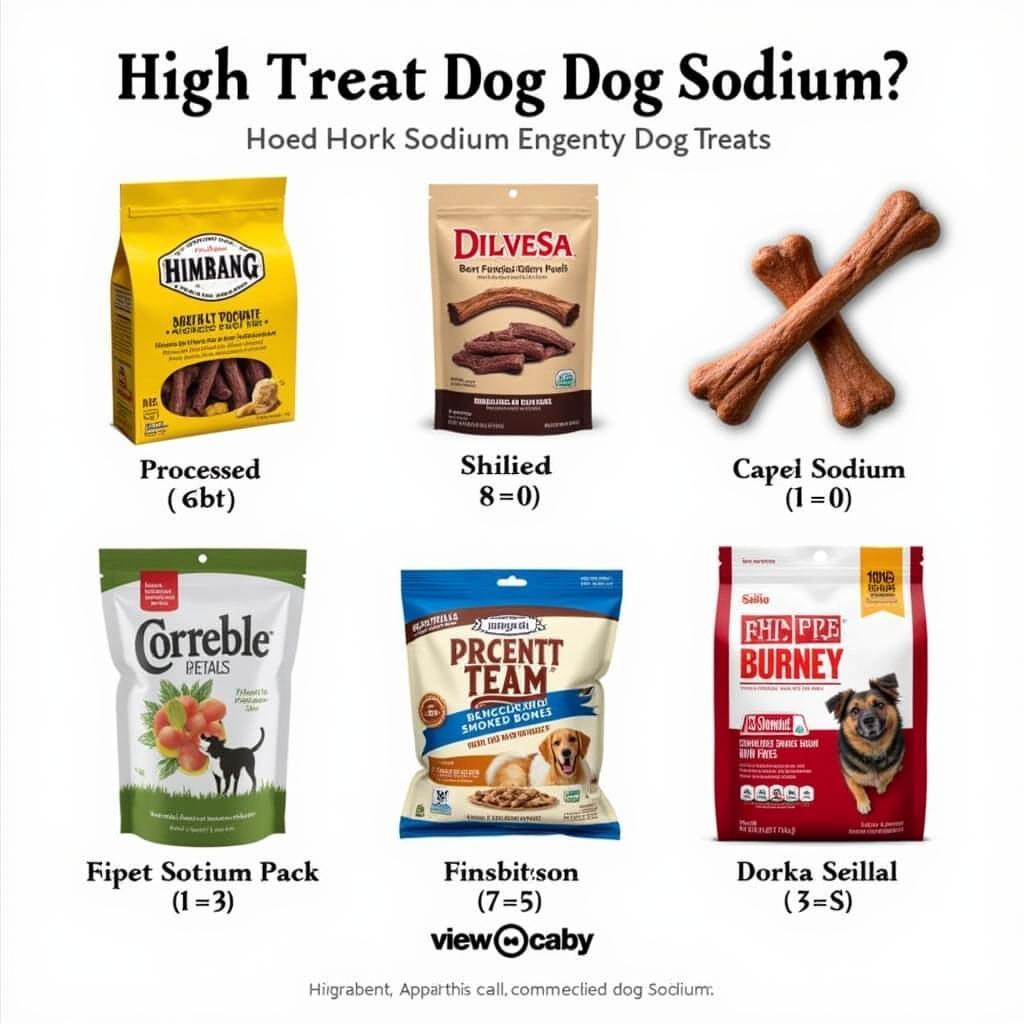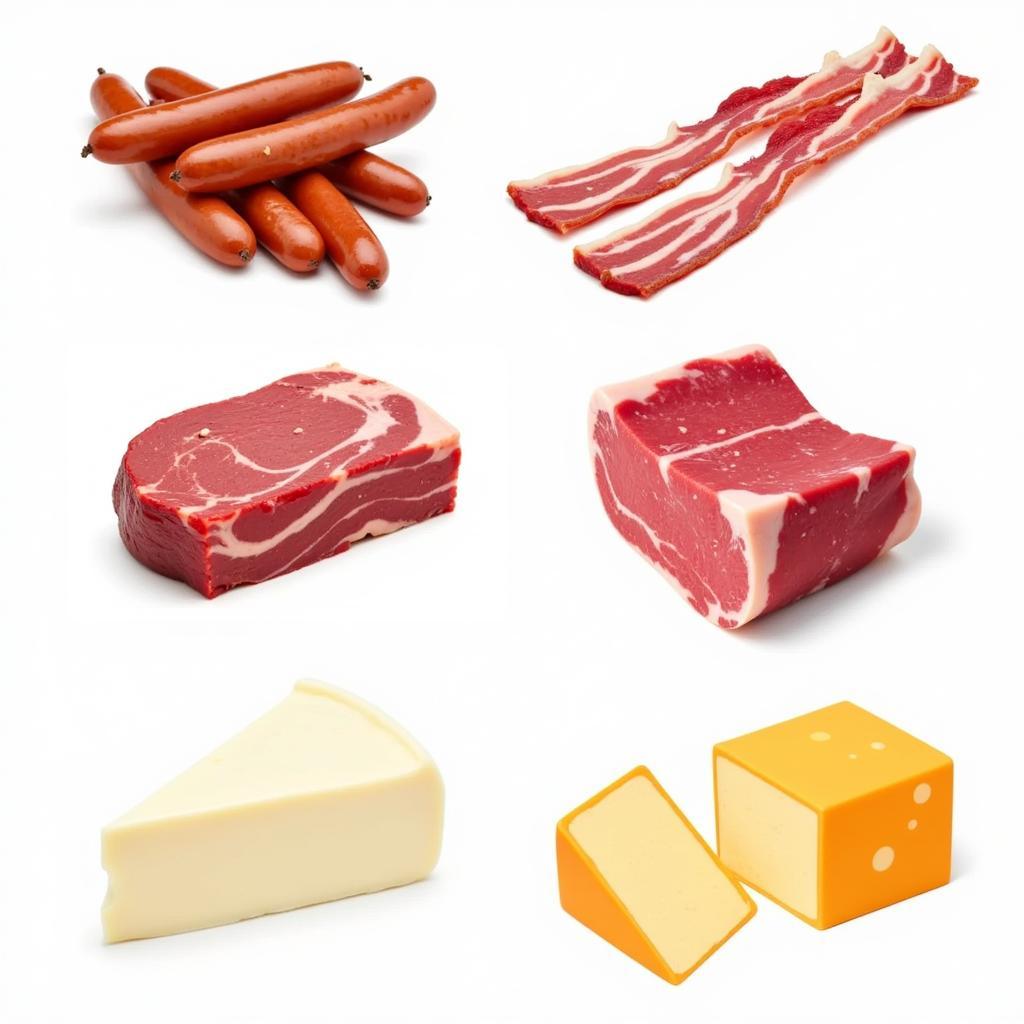Managing a dog’s diet is crucial when they’re diagnosed with Cushing’s disease. Foods to avoid with Cushing’s disease in dogs are just as important as the foods they should eat. This condition, also known as hyperadrenocorticism, causes an overproduction of cortisol, leading to a range of symptoms and health complications. By carefully selecting what your furry friend consumes, you can help manage the symptoms and improve their quality of life.
Understanding Cushing’s Disease and Dietary Needs
Cushing’s disease impacts a dog’s metabolism, increasing their appetite and thirst while also making them more susceptible to infections. Therefore, a modified diet plays a vital role in managing the disease. Choosing the right foods can help regulate blood sugar levels, reduce water retention, and support the immune system. Avoiding certain foods is equally important, as some can exacerbate symptoms and complicate the disease’s management.
Foods to Avoid with Cushing’s Disease in Dogs: A Detailed Guide
There are specific types of foods to avoid with Cushing’s disease in dogs. These typically include foods high in sodium, fat, and simple carbohydrates. Let’s break down why these are problematic and what alternatives to consider:
High-Sodium Foods
High sodium intake can worsen water retention, a common symptom of Cushing’s. Avoid salty treats, processed meats, and canned foods with added salt. Instead, opt for fresh, home-cooked meals where you can control the sodium content.
 Dog treats high in sodium
Dog treats high in sodium
High-Fat Foods
Fatty foods can contribute to weight gain and exacerbate pancreatitis, a risk factor for dogs with Cushing’s. Limit fatty meats, dairy products, and table scraps. Lean protein sources like chicken breast, turkey, and fish are healthier choices.
 High-fat foods to avoid for dogs with Cushing's
High-fat foods to avoid for dogs with Cushing's
Simple Carbohydrates
Simple carbohydrates can cause spikes in blood sugar, which is particularly problematic for dogs with Cushing’s who are already prone to insulin resistance. Avoid sugary treats, white bread, and processed foods high in refined sugars. Choose complex carbohydrates like brown rice, sweet potatoes, and oats.
What Can My Dog Eat with Cushing’s Disease?
While knowing which foods to avoid is essential, understanding what your Cushing’s dog can eat is equally vital. A balanced diet rich in lean protein, complex carbohydrates, and fiber is key.
Protein Power
Lean proteins are essential for maintaining muscle mass and supporting overall health. Consider incorporating chicken breast, fish, and eggs into your dog’s diet.
Complex Carbohydrates for Sustained Energy
Complex carbohydrates provide sustained energy without causing dramatic blood sugar fluctuations. Brown rice, quinoa, and sweet potatoes are excellent options.
Fiber is Your Friend
Fiber helps regulate digestion and can assist in managing weight. Add fiber-rich vegetables like green beans, carrots, and broccoli to your dog’s meals.
Creating a Cushing’s-Friendly Meal Plan
Developing a tailored meal plan for your dog with Cushing’s requires careful consideration. Consult your veterinarian to discuss your dog’s specific needs and create a plan that addresses them. They can help you determine the appropriate portion sizes and ensure the diet provides all necessary nutrients.
Conclusion: Prioritizing Your Dog’s Health with the Right Diet
Managing foods to avoid with Cushing’s disease in dogs is a critical aspect of caring for your furry companion. By understanding the impact of diet on this condition, you can make informed choices that support their overall well-being and improve their quality of life. Remember to consult with your veterinarian for personalized dietary recommendations and regular monitoring of your dog’s health.
Frequently Asked Questions (FAQ)
- What are the first signs of Cushing’s disease in dogs? Increased thirst and urination, increased appetite, and a pot-bellied appearance are common early signs.
- Can Cushing’s disease be cured in dogs? While not typically curable, it can be effectively managed with medication and diet.
- How long can a dog live with Cushing’s disease? With proper treatment and management, dogs with Cushing’s can live for several years.
- Is there a special dog food for Cushing’s disease? While there isn’t a specific “Cushing’s diet” dog food, prescription diets designed for diabetic or renal issues can sometimes be helpful.
- What are the long-term effects of Cushing’s disease in dogs? Untreated Cushing’s can lead to a range of complications, including diabetes, high blood pressure, and skin infections.
- How can I help my dog with Cushing’s if they are always hungry? Feed smaller, more frequent meals throughout the day and offer low-calorie, high-fiber snacks.
- What supplements can help my dog with Cushing’s? Discuss any potential supplements with your veterinarian before giving them to your dog.
More Resources on Mina Cones Food
For more information about dog nutrition and managing specific health conditions, browse our other articles on Mina Cones Food. You might find these helpful:
- “Understanding Canine Nutrition”
- “Homemade Dog Food Recipes”
Need Help? Contact Us!
For personalized support regarding your dog’s nutritional needs and managing Cushing’s disease, contact Mina Cones Food at:
Phone Number: 02437655121
Email: minacones@gmail.com
Address: 3PGH+8R9, ĐT70A, thôn Trung, Bắc Từ Liêm, Hà Nội, Việt Nam.
Our customer care team is available 24/7.